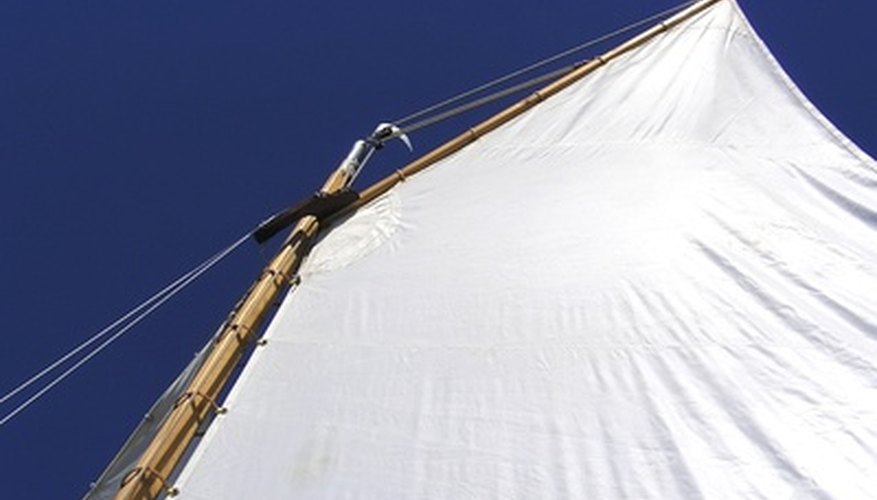Ripstop nylon is a woven fabric made from nylon that is used for boat sails, parachutes, outdoor clothing, tents, flags, kites, sleeping bags, and other uses where a durable and lightweight fabric is needed. The fabric is made from nylon, which in itself is durable, and it is woven in a unique way to prevent rips and tears. It can be treated with chemicals to make it waterproof and fireproof.
Weave
Ripstop nylon is different from other nylon fabrics because it is woven with two types of nylon thread, one of which is heavier than the other. The heavier nylon thread is woven into both the warp and weft at specific intervals and gives a great deal of tear resistance to the fabric. Normal nylon fabric tears rather easily, however, ripstop, even if accidentally melted or clipped with scissors, will not continue to tear except under extreme weight conditions.
Coating
The early versions of ripstop nylon used a polyurethane coating that was bonded to the nylon using heat. Newer versions bond the coating without using heat, which makes the waterproofing much more durable. In fact, the cold-bonded ripstop nylon can withstand repeated washing and exposure to moisture without losing its waterproofing protection.
- The early versions of ripstop nylon used a polyurethane coating that was bonded to the nylon using heat.
- In fact, the cold-bonded ripstop nylon can withstand repeated washing and exposure to moisture without losing its waterproofing protection.
Some ripstop nylon is also coated with fireproofing or retardant chemicals. Nylon itself does not burn. When it gets too hot, it melts.
Heat and Acids
Heat and acids degrade ripstop nylon, although not as quickly as typical nylon. The polymers that nylon is made from react to exposure to acids like chlorine or sulphuric acid by drying out and cracking. Soap that does not contain bleach or chlorine should be used when laundering the nylon to prevent degradation of the waterproofing and the nylon fabric itself.
- Heat and acids degrade ripstop nylon, although not as quickly as typical nylon.
- Soap that does not contain bleach or chlorine should be used when laundering the nylon to prevent degradation of the waterproofing and the nylon fabric itself.
Storing ripstop nylon that is waterproof in damp areas will also tend to degrade the fabric. Ideally it should be stored in a dry place where it will receive good ventilation. Tents should be thoroughly dry when put back in their stuff sacks, or dried as soon as possible once they are taken down.
